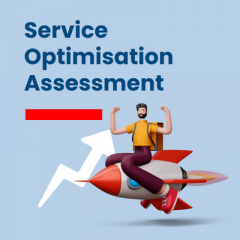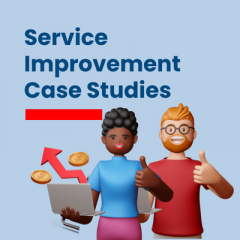
By Scarlett Bayes, Industry Analyst, SDI
In Part 1 of this blog we looked at what Enterprise Service Management (ESM) actually is, and how it can benefit a business.
We previously discussed that ESM best practice and processes can be implemented throughout a business in order to improve efficiency, effectiveness, and self-service. There are many functions within a business that can be facilitated by ITSM tools and processes. For example; HR can use IT’s tool to manage holiday requests, training requests, and on-boarding new employees; Legal can review, approve, and certify documents; and Finance can approve expenses, send invoices, and complete transactions. Any non-IT department can benefit from ESM if they receive a high volume of similar requests, they need to track and manage requests, or often provide standard reports. These processes are similar to those a service desk performs; therefore, many non-IT departments can benefit from an ITSM tool being applied company-wide.
How is this different from Shared Service Management?
The difference between ESM and SSM is significant. ESM, as we have established, is sharing ITSM best practice and processes with non-IT business units. Shared Service Management (SSM) signifies merging service desks with an organisation. For example, if an organisation has different service desks for IT, HR, and finance, then businesses could potentially be spending more than they need to by maintaining each desk separately. Furthermore, SDI research has shown that 62% of service desks receive calls in excess of 3% that are meant for another desk, which leads to frustration and time wasted for both the customer and the service desk. The benefits of SSM range from raising the quality and accessibility of services to securing sustainable efficiencies and savings.
So which comes first?
If we consider ESM as a journey, culminating in SSM, organisations can use ESM to recognise the benefits of collaborating with other business services and establishing efficient tools and processes, without the political challenges associated with the merging of desks depicted by SSM. This allows organisations to transition at a speed which suits the employees, the business itself, and the customers. Of course, as with any journey, you can choose to stop at any point. There is nothing to suggest that every organisation that participates in ESM will eventually move on to SSM. Additionally, those who practice aspects of ESM, and have not implemented a full ESM model are not bound to increasing the scope of the model.
In short, ESM is ideal for organisations who are looking to reduce overhead costs, refine and streamline processes, or increase ROI on service management tools. SSM goes further by combining service desks within an organisation, creating a single point of contact for all service management related matters. There are benefits and challenges to both models, which will manifest in different ways for different businesses. It is important to consider what best suits your organisation when considering an ESM or SSM model implementation.
























